We are pleased to welcome guest blogger, Lauren Gotard, Preservation Long Island’s 2024 Gardiner Young Scholar, who researched the personal papers and LGBTQ+ history of our founder, Howard C. Sherwood (1871–1957). His eighteenth-century home, the Sherwood-Jayne House, and the art and antiques he collected are now stewarded by Preservation Long Island.
“This is home—the haven a cage surrounded by ash—the fate of Paradise” – Agha Shahid Ali

I recently visited Sherwood-Jayne Farm for the first time. Though I had never walked its historic halls before, I felt a particular connection to the space. I can only attribute this overwhelming feeling to the fact that I had been reading through the personal papers of the house’s late owner for the past few weeks. And I was discovering that this man and his home were linked in more powerful ways than previously suspected. Founder of the Society for the Preservation of Long Island Antiquities (SPLIA), Howard C. Sherwood (1871–1957) passed away at the age of 86, donating his already historic, eighteenth-century home in Setauket to the organization he helped to create. Known today as the Sherwood-Jayne Farm, Sherwood’s bucolic property is now one of four house museums owned and operated by Preservation Long Island (formerly SPLIA), and offers a glimpse into the Colonial Revival movement of the early twentieth century. In addition to his home, Sherwood donated a personal collection of diaries, letters, and photographs; yet up until now, this archive had never been studied in its entirety. We knew very little of Sherwood the man beyond his image as an avid antiquer.

By the time I traveled out to Setauket to visit Sherwood-Jayne Farm, I had spent the last month getting to know Howard in a new way. Supported by the Robert David Lion Gardiner Foundation Young Scholars Program, I transcribed all of his handwritten diaries into type and compiled a comprehensive timeline of his life. I was even able to identity men we once thought were Sherwood’s brothers as actually his close male friends pictured with him in the kinds of portrait photography usually taken with family members. But, most importantly, I started to see a man, flesh and blood and complicated, emerging from the documents he left behind. With a better understanding of the intimate relationships he kept with other men, Howard emerges as a queer man living in early twentieth-century America. Now, as I walk the halls of Sherwood-Jayne, the house does not appear as just a preservation project looking back at the aesthetic of early America, but rather as something more complex: a sanctuary for queer men searching for community in their own time. Throughout this article, I employ the word “queer” not in an attempt to confirm Sherwood’s sexual orientation, but instead to explain his unwillingness to abide by new gender roles that emerged over the course of his lifetime. [1]

It might seem strange to hear the notoriously “stuffy” late Victorian era (about 1870 to 1900), the period into which Sherwood was born, referred to as a time of tolerance. Within certain social spaces, however, men and women experienced a level of uncategorized sexual mobility we would not recognize today. Certainly, a strict order of cultural mandates permeated every facet of social life, especially for upper-class white Americans like Sherwood, and when it came to gender and sexuality, this was no exception. From courting rituals on the promenade to the restriction of women to the domestic sphere, this was indeed a stratified and strictly regulated time. [2] Middle- and upper-class men and women led largely parallel lives. Many social spaces were occupied by men, while women congregated inside the home. [3] According to historian Caroll Smith-Rosenberg and later Kevin Murphy, within these homosocial spaces, Victorians accepted “a wide latitude of emotions and sexual feelings” because “they neither understood nor organized their sexual practices along a hetero-homosexual axis.” [4] For instance, in the absence of women, intimacy between men was tolerated as a momentary attraction; one’s sexual preference was not considered a core characteristic of their identity. At the time, there was no concept of a heterosexual or homosexual individual. In fact, these words did not exist in the lexicon.

From his early papers, we know Sherwood attended Phillips Exeter Academy and Harvard University, all-male spaces where he was able to express interest in intimate relationships with other men. I found cartes de visite in his collection showing him and friends posed in women’s garb with handwritten notes of affection to each other on the backs. [5] Sherwood even describes accounts of friend Romney Spring nursing him back to health and summers spent bathing and sketching with friends Tracy Hoppin and Archibald Tisdale on the beach. [6] Scholar Michael Bronski confirms that historians have uncovered in letters and diaries “complex networks of friendships” between people of the same sex during the eighteenth and nineteenth centuries, which he describes as kinds of “love letters” while also noting that “love [did] not always mean sex.” [7] Sherwood appears to have fostered these kinds of “romantic friendships” with other men quite early in life. Such relationships were not always sexual but were built on intense emotional bonds that were not yet stigmatized as “queer.” While other boys interacted in plutonic relationships centered around competitive clubs and sports that we would recognize today, the Victorian tolerability for a range of sexual and gender expression within same-sex spaces allowed a young Sherwood to show his interests in ways that would soon become less tolerated.

In the ashes of the Victorian era emerged a new century with new freedoms and a whole new set of rules to follow. Historian Brooke Blower asserts that by the early twentieth century, the homosocial spaces of old started to integrate and new pleasure grounds, like movie theaters and dance halls, opened up for middle- and upper-class Americans to “go out.” [8] With less parental surveillance over this spaces, men and women could increasingly express their desire for each other in public. [9] This led to the perceived abnormality of not externalizing one’s heterosexual attraction. Sexual behavior soon became a defining characteristic of a person’s identity, and suddenly, to engage in homosexual activity meant that one was homosexual. According to historian George Chauncey, “normal” men, seeking to avoid being derogatorily labeled as “inverts,” “perverts,” or “queers,” started to differentiate themselves by renouncing “any sentiments or behavior that might be marked as homosexual.” [10] Simultaneously, as champions of the women’s rights movement gradually secured new freedoms for the previously sequestered sex, the traits which defined masculinity and femininity were also thrown into question. [11] Traditional characteristics of masculinity we would recognize today—like physical prowess and womanizing—became widespread expectations for men. Perhaps this shift is epitomized best by the emergence of prize-winning bareknuckle boxers, like John L. Sullivan (1858–1918), as pop-cultural icons. [12] With a new century came a new core component of identity, heterosexuality, which had to be publicly performed to avoid suspicion.
Graduating from Harvard Law in 1896, during this new cultural moment, Sherwood’s lifestyle, which was tolerated as a young adult, would now result in his categorization as a “queer” man. While “normal men” redefined themselves in terms of hypermasculinity, Sherwood, who was now a practicing estate lawyer, expressed the same interests as his boyhood self. He continued to be drawn to “feminine” expression and intimacy with other men, but now in a world that would increasingly define him by his romantic preferences. [13] Although romantic friendships among men were no longer socially acceptable, Sherwood remained living as a bachelor with his boyhood companions in apartments in the city, now a man in his thirties. [14] It was not extraordinarily rare for young men to delay marriage and congregate in male social clubs, but very few remained confirmed bachelors their entire lives, most marrying by the age of thirty. After peaking in 1890, the median age of marriage for men slowly declined as the twentieth century progressed. Even “bachelor” became a stigmatized term, as historian Howard Chudacoff points out, “signifying to some that the labeled individual was unmarried because he was homosexual.” [15] On four occasions, Sherwood wrote into a Harvard alumni column addressing his “still unmarried” status in life updates, presumably his lifestyle was becoming increasingly suspect for a man his age. [16]

While other bachelors postponed the marriage pipeline to prioritize leisure activities at men’s clubs and casual liaisons with women, Howard was not swimming in the same circle as New York’s dwindling pool of young unmarried men. Partly in response to the growing woman’s movement, pop-culture produced for bachelors often conveyed anti-female sentiments, and the archetype of the “nagging wife” and her “neutered husband” became a popular subject among cartoonists. This relationship, hyperbolized in drawings, told men that such coupling was to be avoided for as long as possible. [17] For many, clinging to bachelordom was a way to hold onto their manliness before the inevitability of marriage. But Sherwood’s bachelor lifestyle does not appear undergirded by an obsession with proving his manly prowess before married life. Besides the occasional tennis match, he did not seem to foster relationships with other men on the basis of “manly rivalry.” [18] Instead, Sherwood was more likely to engage in what were largely considered more “feminine” social activities, like antiquing or attending cocktail parties with his sister Jennie and other “bohemian friends.” [19] Sherwood was not a typical bachelor. Rather than seeking manly competition, he seems to have yearned for quite the opposite.
At this point in his life, Sherwood started expressing his physical attraction for men in his diaries. During one trip to Italy, he was enamored with a man named Nino whom he met on an antiquing odyssey, commenting in Italian that he was “a good piece of a man.” [20] In Gay New York: Gender, Urban Culture, and the Making of the Gay Male World, 1890–1940, historian George Chauncey cites a similar example related to queer diarist Charles Tomlinson Griffes (1884–1920), who wrote about his “gay-related experiences” in German, possibly in an effort to obscure that part of his life. Perhaps Sherwood, under increasing pressure to define his romantic interests, relied on a similar technique to conceal his sexuality. [21] Across multiple diaries recounting trips out west to visit his brother Frank, Howard reported meeting Jack Shaw, a young “pick-up acquaintance” from San Diego, at “the cove” in La Jolla. Howard appears to have been quiet taken by Jack, describing him as “well built and sun-browned.” After their initial meeting, Howard sought to maintain their relationship, reporting meeting or attempting to meet him on many subsequent trips to La Jolla. [22] Beyond swimming and sunbathing with Jack, it is unclear if Sherwood ever physically acted on his attractions, or with any of the other men he mentions in his diaries. According to Chauncey, men with “high-status white-collar jobs,” like Howard Sherwood, were the least likely to act on homosexual desires. Not only was sexual reticence an important social signifier for the middle and upper classes, there were enormous repercussions for getting caught, especially for gay men in New York. [23] Regardless, Sherwood’s attractions were increasingly fitting the newly invented category of “homosexuality” by the 1930s, an emergent identity that was progressively threatened by the growing heterosexual world invented right alongside it.
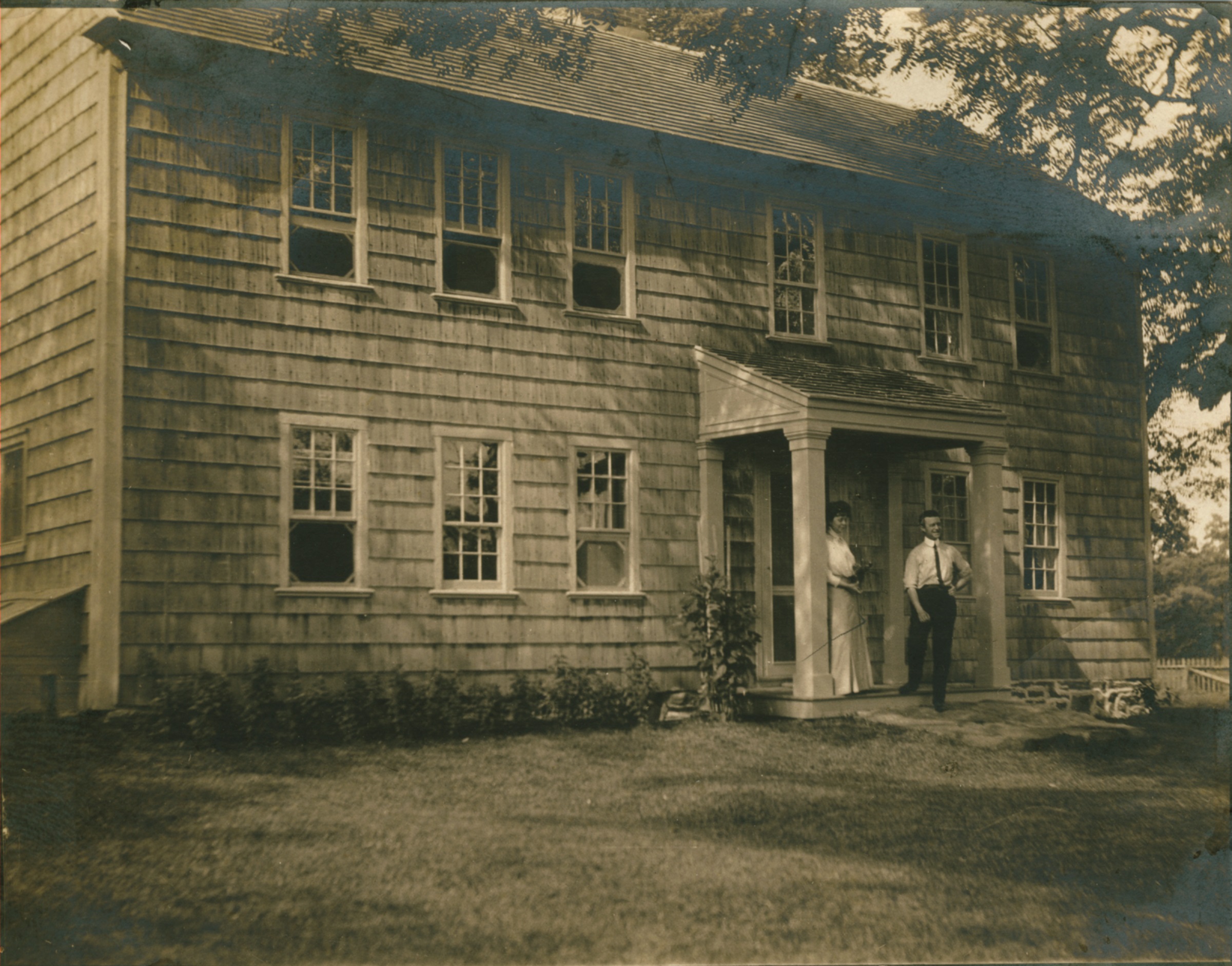
As the twentieth century advanced, Sherwood was left with few avenues to express his queerness as an upper-class American living in Manhattan. With the expansion of the social purity movement, queer spaces became heavily criminalized, and popular gay bars and bathhouses were raided by the police. [24] If an elite man like Sherwood wanted to visit such establishments, he risked more than just jail time. Raids were especially dangerous to professionally successful men whose names could be revealed to their employers, landlords, and professional peers. [25] In a climate where a person’s romantic inclinations defined their character, Sherwood risked reputation. One gay Wall Street executive from the time recalled: “I always expected the bar I was in to be raided . . . it was a constant, deadening fear on the few occasions I went.” [26] Men like Sherwood had to find alternative strategies to create community. Sometimes this meant forming large cocktail party circuits across townhouses or apartments away from the public’s eye. [27] As a wealthy man, Sherwood may have taken advantage of his greater access to private spaces in the city. But if authorities sought to force New York’s queer world into “the closet,” then men like Howard, who had the means to purchase large properties, would just have to create and dress their own space, where they could coexist—alone and together. [28]

Sherwood’s decision to live for seasons out of the year at the Jayne House in Setauket can be interpreted as this kind of social strategy—a way for him to express the queer aspects of his gender and sexual identity. Walking through the Sherwood-Jayne house myself, I can see a man who was passionate about preserving his historic home, filling it with treasured antiques from around the world. But I also see a man who struggled, having grown up in a very different world from the one he was living in now. It is no coincidence that Sherwood recorded in one of his diaries having trouble describing himself as “a grown up.” [29] It seems he was creating at the Jayne House an environment, where as an adult, he could live as free as his boyhood self once did. Within its walls, Sherwood was able to live as a man who fostered “the feminine,” exuding what author Will Fellows calls “gender atypicality” for a man during his time. Fellows notes examples of other queer preservationists throughout American history, defining “gender atypicality” as boyhood interest in “quiet activities . . . music and art . . . homey things and homemaking activities . . . ” and the desire to “seek connection rather than competition or conquest.”

Fellows tracks these qualities from childhood hobbies to the eventual redirection to preservation projects as adults. [30] From Sherwood’s early school days where he dressed theatrically with other boys to his antiquing trips as an adult, he had always favored traditionally feminine interests. Now, Howard finally had a safe space to explore them. At the Jayne House, Sherwood was able to engage in them through socially acceptable tasks associated with restoring an old home, finding liberation under the cover of artiness. He regularly reported spending weekends at Setauket “antiquing” the entire farmhouse. [31] This dedication to interior decoration did not just occupy Sherwood during his first few years at the Jayne House, but lasted over the course of the several decades he called it home. Sherwood relished his antiquing endeavors, keeping a meticulous inventory of each item he collected along with relevant provenance information. [32] Within this historic property, Sherwood could nurture and celebrate his passions and also share them with others.

As I toured the first floor of the Jayne House with Howard’s descendent, Kitty Dickinson-Lebens, she conveyed the excitement he must have felt when he found, after ripping up layers of peeling wallpaper, the eighteenth-century floral wall decorations hidden beneath. All of it hand-painted in vibrant hues of aqua, pink, and green. In the years following this discovery, Howard hosted artists like Emile Gruppé (1896–1978) who in-painted and restored them. [33] Sherwood took great pride in renovating and beautifying his home, a place where he could host men with similar interests safely under the umbrella of preservation. Fellows describes this love of hosting as “domophilia,” a spirit of hospitality or homemaking historically associated with femininity in American culture. [34] Lebens confirms that Sherwood was “a party animal” who truly loved to entertain. Every week, he would have guests who her mother called “the boys” over for cocktails. I can sense this love of hosting in Sherwood’s own words. He fondly recalled having 200 people at his house for an early SPLIA event, remarking, “it was really an experience to greet so many people.” [35] Ownership of the historic Jayne House similarly afforded Sherwood the opportunity to host other groups, like the prestigious Walpole Society, whose members shared his interests in interiors and antiques. [36]
The Jayne House not only provided Sherwood with an appropriate forum for embracing his “atypical” gender identity, but also an avenue for forging partnerships antithetical to the accepted marriage model. Historian Kevin Murphy argues that such historicist projects provided a refuge for men and women who “avoided participating in the courting rituals” taken up by heterosexual Americans. Immediately after purchasing the Jayne House in 1908, Sherwood and his male friends, many from his boyhood days, stayed for months in Setauket in what they called “bachelor halls,” periods of time when they effectively lived together for parts of the year. When Archie kept “bachelor hall” with Howard from May to June, he left the following note in Sherwood’s guest register: “a procession of flowers from apple trees, dogwood, and their companions through cool nonsurmountable days, to the accompaniment of old delight.” The old delights, the former intimacy they had once experienced at Harvard and Exeter, could be shared again in the secrecy of bachelor halls. For decades, friends like Archie and Tracy left similar notes, describing tending the farm and renovating the house in language reminiscent of newlyweds refurbishing their first home together. After spending another month in bachelor hall with Sherwood, Archie reported: “enjoyments too numerous to record here… full of spirits, well muscled with the double saw and happy with treasured memories.” [37] Here, Archie seems to be referencing Sherwood’s physique as the two engaged in their usual habit of cutting firewood. Writing at the end of the nineteenth century, poet Frederick Shelley Ryman (1858–1930) similarly used the term “bachelor hall” to describe moments he could explore emotional and physical attraction to other men in the absence of women. [38] His use of the term may have meant something similar to Sherwood, Archie, and other friends. The privacy of the Jayne House allowed them to form partnerships that broke from the heterosexual marriage mold, giving a new meaning to what family could look like for men who loved each other.
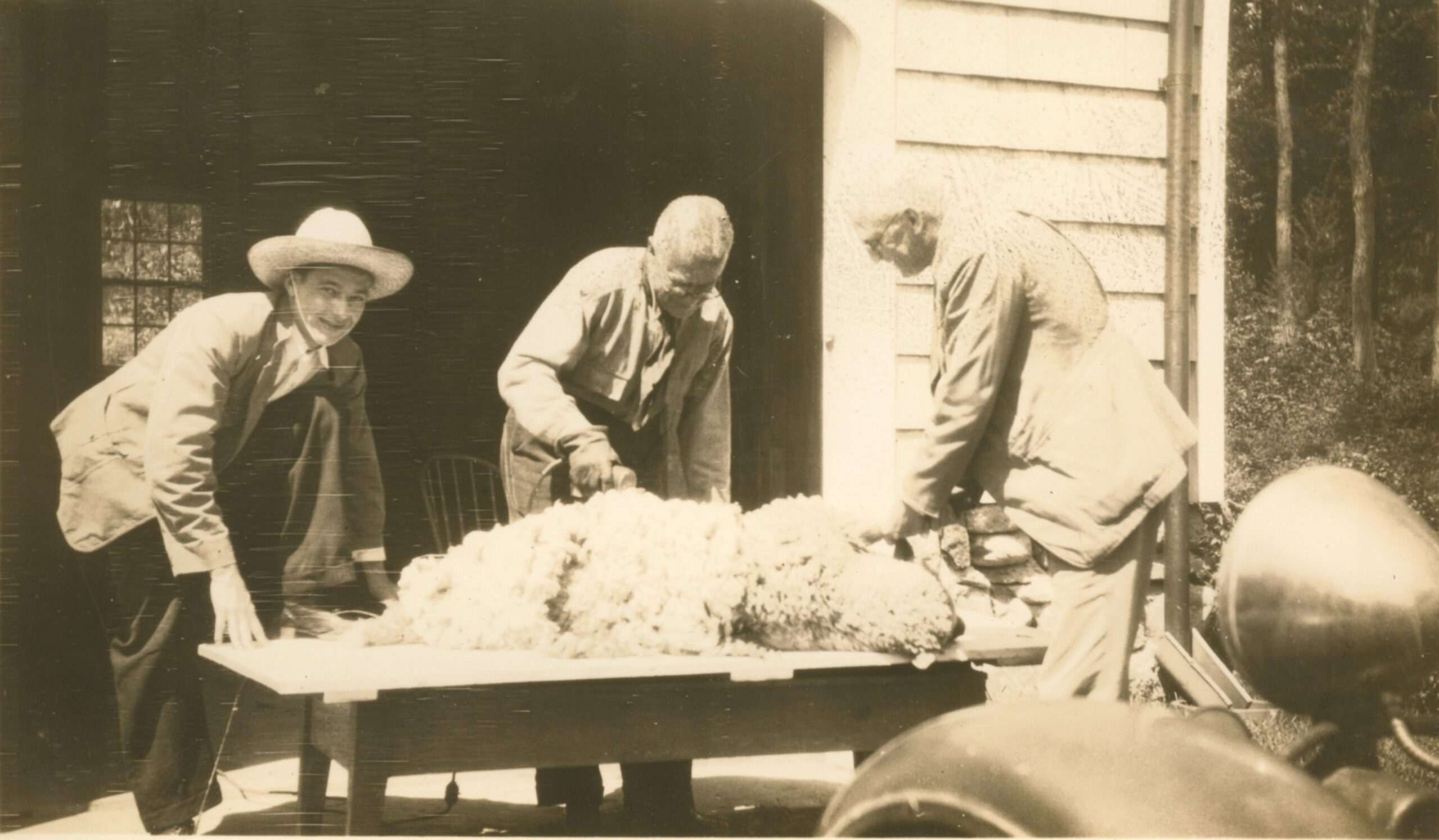
In addition to his friends, Sherwood hired two male groundskeepers, Charlie Bickford and Alfonso Finamore, who also made up the alternative family structure he created at the Jayne House. Throughout his papers, Sherwood literally describes his groundskeepers as “the family.” This choice of diction denotes that life on the property was a cleavage from societal norms—a kind of chosen family rather than a strictly biologic or heterosexual unit. [39] Sherwood’s chosen family also included the sheep and dogs he, his friends, and groundskeepers raised together. Howard described how each member of “the family” took part in the sheep-shearing process, recalling the time Charlie and Alfonso chased after the sheep while he an Archie leaned over the fence which shook with their laughter. [40] Archie even accompanied Howard across the Sound to learn about the cloth-making process. Sherwood subsequently ordered suits for him and Archie made from the wool of the sheep they raised together and dyed with walnuts from the trees back in Setauket. [41] Sherwood and the men of the Jayne House were involved in every moment of rearing the animals. In fact, Howard even referred to them as their collective “babies.” [42] This word choice can be interpreted as their adoption of these animals as part of a different kind of family structure at the time. In the isolation of the Jayne House, Sherwood renovated an historic home while effectively renovating the American marriage model to suit his personal identity. Regardless of whether or not he was physically romantic with any of these men, Sherwood was able to maintain close male bonds within the bounds of his historic property, a place that, on the surface, celebrated nationalistic ideals associated with historic preservation, while in practice, offered a refuge away from scrutinizing eyes.
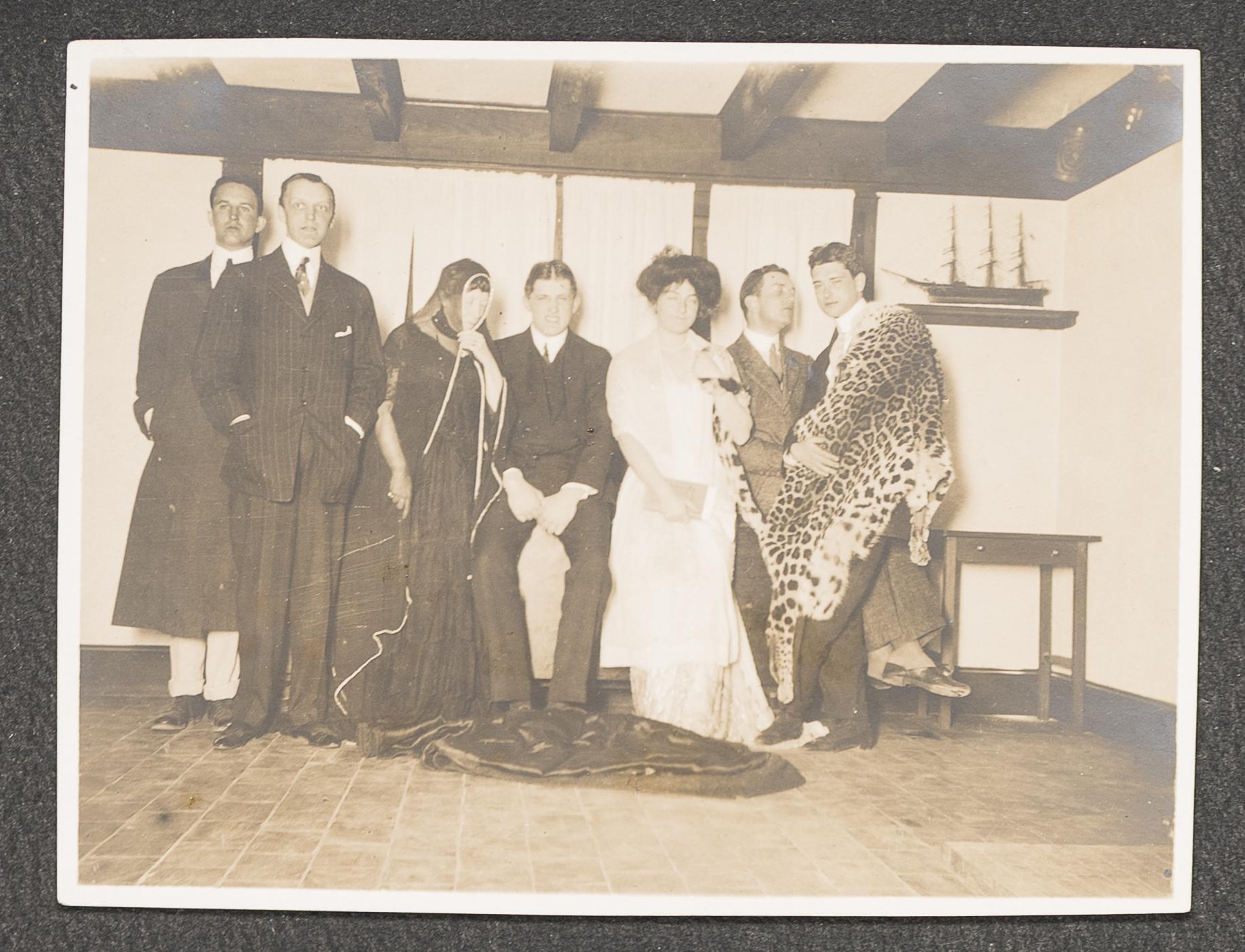
“What disappears faster than a garden without a gardener?” asks Mark Doty, a modern-day antiquer who saved historic New England homes alongside his partner Wally Roberts in the 1980s. [43] What Doty argues is that if we don’t also study the people who saved historic properties, “the gardeners,” the true stories of “the gardens,” or the homes, they maintained, disappear a little more each year. Released in 1980, Elizabeth Stillinger’s The Antiquers was one of the first academic works to explore individuals who pioneered preservation projects in America. Yet, throughout her almost forty biographical sketches, Stillinger’s work goes no further in its exploration of these antiquarians’ natures than to describe them as “colorful, eccentric, some of them slightly ‘shady,’ all of them unusual.” [44] Unfortunately, as Michael Bronski asserts, people in the mainstream tend to only realize, long after the fact, the vision and new values queer people have brought to American culture. [45]
Nearly three decades later in 2005, Will Fellows published his landmark study, A Passion to Preserve: Gay Men as Keepers of Culture, in which he interviewed nearly sixty self-proclaimed queer preservationists operating in the twentieth century onwards. As I read through these interviews, I was struck by the similarities between Sherwood’s life and the lives of historic and more contemporary preservationists operating in the 1960s and 1980s. [46] Historical Societies have only recently started sharing the queer histories of the preservation projects these men pioneered across the nation. For instance, Historic New England includes the personal stories of Henry Davis Sleeper (1878–1934) in tours of his historic home in Gloucester, Massachusetts. Their most recent exhibition and publication, The Importance of Being Furnished: Four Bachelors at Home, explores the lives of Ogden Codman Jr. (1863–1951), Charles Hammond Gibson (1874–1954), and Charles Leonard Pendleton (1846–1904) in addition to Sleeper—all bachelors who championed historicist projects and created alternative family structures similar to Sherwood’s own queer community at the Jayne House. [47] There appears to have been complex cross-pollination between these individuals and their homes, their properties making up a large circuit of houses queer preservationists would visit when searching for family, community, and advice on their own renovation projects.
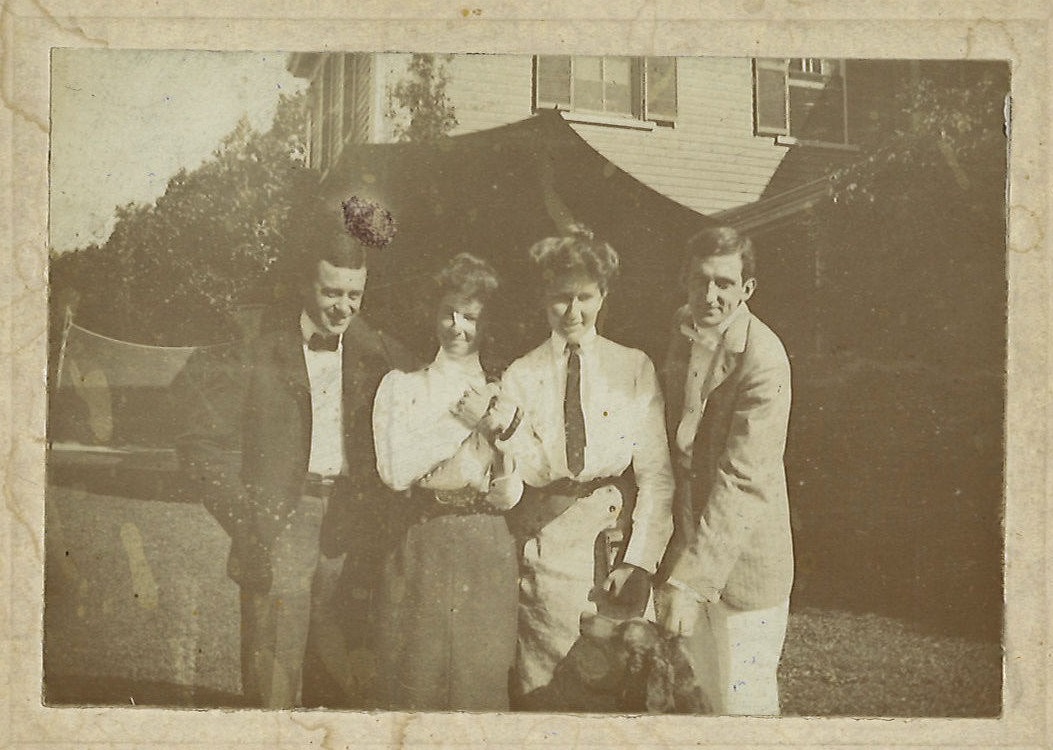
Given Sherwood’s social standing and extroverted personality, it is not surprising that he knew some of these men. The more I research him, the more connections I find. Howard visited the homes of other queer preservationists during tours of American historic properties and invited them into his own community at the Jayne House. He recounted visiting York Village, Maine in 1940 with Charlie and his sister Jennie where they spent two nights with Bessie Perkins, who showed them “many interesting old houses.” [48] Scholar J. Samaine Lockwood argues that Elizabeth “Bessie” Perkins formed her own queer community within her historic home. [49] Sherwood’s guest register reveals that Perkins also visited him at the Jayne House. [50] In the guest books from Henry Davis Sleeper’s Beauport and A. Piatt Andrew’s Red Roof Inn, adjacent properties in Gloucester, MA, Archie Tisdale’s and Romney Spring’s signatures appear on several occasions between 1902 and 1913. [51] This paper trail is concrete evidence that Sherwood’s close circle of friends is linked with a greater, largely queer Harvard alumni group engaged in preservationist activity. Looking through the diaries of people like Howard Sherwood, Henry Davis Sleeper, and others, it appears they relied on each other more than previously assumed. They directly communicated with each other for renovation advice, second opinions on decorations, personal matters, queer relationships, and even celebrated each other’s homes through in-person visits. [52]
Will Fellows quotes one gay preservationist as saying: “historic preservation and friendship are bound together.” [53] Recent research indicates that these historic homes were a complex latticework of friendly outposts for queer people in the twentieth century, each one a microcosm of a larger, interconnected social circle of preservationists linked across the nation. [54] For instance, Fellows highlights how individual queer preservationists actually created multi-generational communities who preserved the same historic homes over decades. [55] Sherwood-Jayne Farm might be recontextualized as part of another transnational, transhistorical movement of queer Americans developing strategies to survive the twentieth and twenty-first centuries by forging their own chosen families within their historic homes. In turn, Sherwood’s name could be added to a growing list of queer preservationists who worked together to save slices of American history in little “Edens” across the country.

When it comes to exploring the lives of men like Howard Sherwood, Preservation Long Island is extraordinarily lucky to have details of his biography recorded on paper. Indeed, preservationists are the kind of people who tend to leave scraps of their lives behind. One queer preservationist Fellows interviewed admitted that he thought about writing his story “on little sheets of paper” and “pasting them behind the photos or stuffing them in the legs of tables” so that “someone at another time and in another place will know.” [56] Another gay couple actually wrote on a piece of wallboard in an historic home they were renovating: “We are two homosexual men working on this restoration. When this building is torn down. We hope you find our signatures.” [57] But the scraps left behind by queer, preservation-minded people have historically been neglected, and even eradicated from the written record. The papers of seemingly queer founder of the Society for the Preservation of New England Antiquities (today Historic New England), William Sumner Appleton (1874–1947), were destroyed when he passed. Fellows suspects that Sumner’s voluminous set of scrapbooks, not unlike Sherwood and other preservationists’ own collections, was probably ruined in an effort to “straighten” his biographical record. [58]
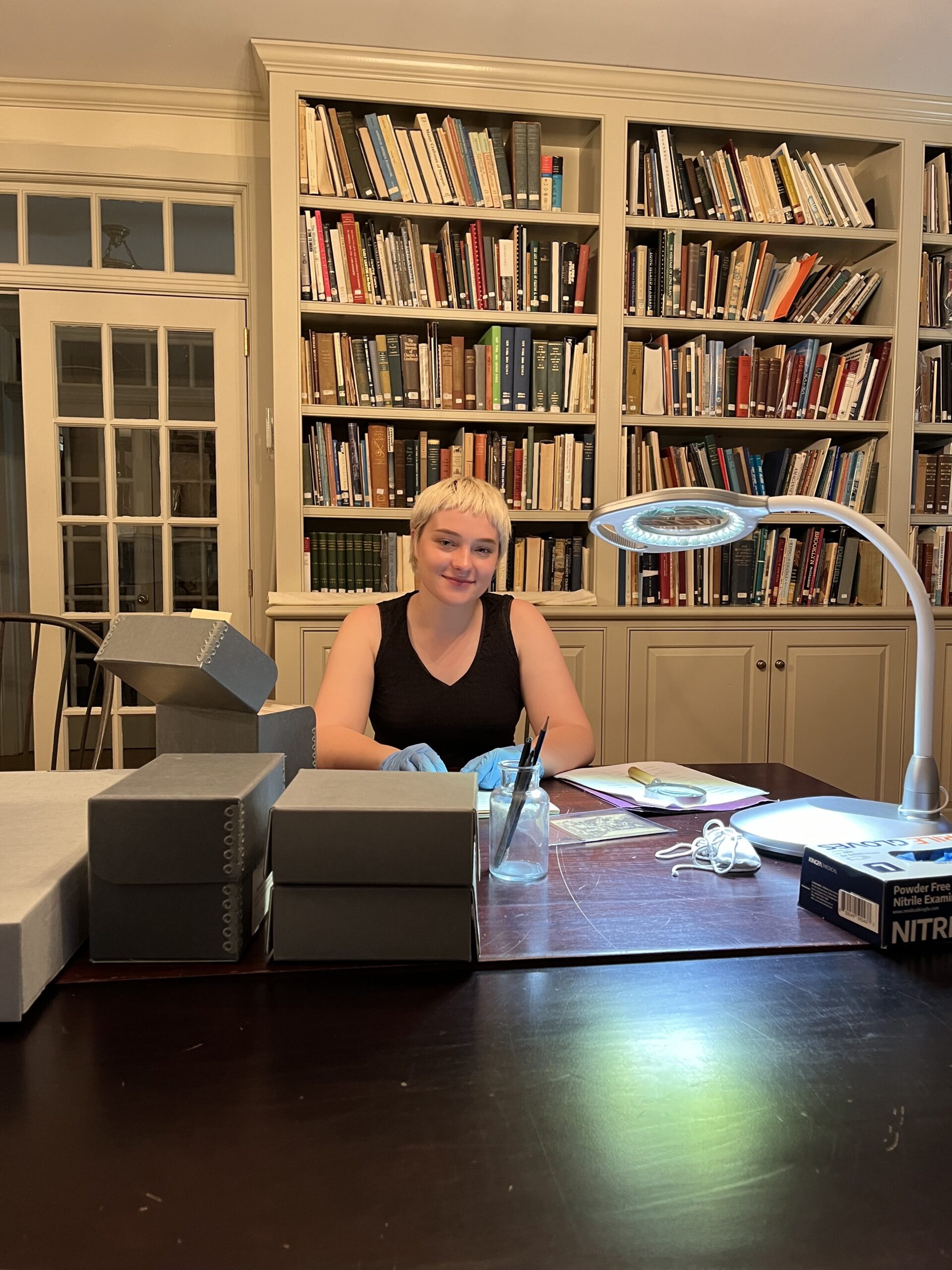
We are fortunate to have boxes full of papers that both document Sherwood’s lived experiences and the very home in which he dwelled. Kevin Murphy writes that the three-dimensional nature of such a place “allow[s] the past not only to be understood intellectually but to be experienced in powerful ways.” He further notes that though there are “historical arguments presented by historic sites, just as significant are the omissions, the things that are left unsaid . . .” [59] The Jayne House does not tell the viewer at first glance that it is a queer space. We may not have Sherwood’s admissions written on the walls or stuffed in the floorboards. But by exploring his papers in their entirety, I can see the writing on the wall: Sherwood was likely a queer man who found liberation at the Jayne House. With knowledge of Sherwood’s lived experiences from his writing, I am able to fill in the blanks and view the house in a whole new light. It becomes a queer space right before my eyes, a space that defied the heteronormative model of Sherwood’s, and largely our own, time. I realize that denying the public the story of Sherwood so evident in his papers denies them the opportunity to experience the home’s real transformative power.
After meeting Sherwood in his diaries, I stand before the painted walls and realize why he would have been so ecstatic to find this garden mural hidden away in his home. This discovery offered him the opportunity to invite others interested in all things beautiful into his life. To bring artistic people in to sketch and study the walls. To drink cocktails and talk about the form and color at dinner parties. To open up the gates of his little garden to others searching to be part of something different in a time demanding conformity. I can see it now—restored in vivid color. The lights low. The party raging on in front of these centuries-old, yet still, brightly colored painted walls. Howard at the helm of the fun. I can see the community of people Sherwood tended to gathering around these walls, and I want to celebrate him for that. By knowing the context of Sherwood’s queerness from his papers, I can “re-member” a more complete story of the Jayne House. That is, I can take two disparate stories, the story of Howard as a queer man and the story of the Jayne House itself, and re-combine these narratives, which have long been separated, into a new, effective whole. [60] In light of the man I see emerging from the papers he left behind, it is time to discuss Howard Sherwood and his home in a more nuanced, integrated way. To reconstitute his home as a queer space. To reconsider the legacy of Sherwood-Jayne. To ask: What will be the fate of paradise in Setauket?
 By Lauren Gotard
By Lauren Gotard
2024 Gardiner Young Scholar
Watch Lauren’s short film based on this essay
